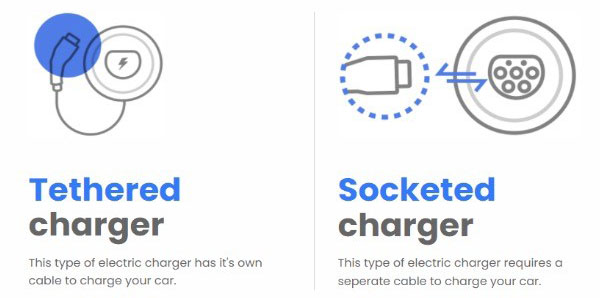What is the difference between tethered and non-tethered EV chargers?
Electric vehicles (EVs) are becoming increasingly popular due to their environmental protection and cost-saving advantages. Consequently, the demand for electric vehicle supply equipment (EVSE), or EV chargers, is also increasing. When charging an electric vehicle, one of the key decisions to make is choosing between tethered and non-tethered EV chargers. This article will explore the differences between these two types of chargers and help you make an informed decision.
First, let’s understand what a tethered EV charger is. Tether chargers, also known as wallbox chargers, come with a permanently attached cable that plugs directly into your electric vehicle. This means the cable is fixed to the charging unit and cannot be removed. On the other hand, wireless EV chargers require a separate charging cable to connect to the EV. The cable can be plugged into the charger when needed and unplugged when not in use.
The main advantage of a tethered charger is convenience. With a tethered charger, you don’t have to worry about carrying a charging cable with you wherever you go. This cable is ready to use, saving you time and energy. Plus, a tethered charger gives you extra peace of mind since the cable is less likely to get lost or stolen.
However, there are some disadvantages to consider when using a tethered charger. First, depending on the length of the cable, the charging station may need to be placed close to your EV to ensure proper connection. This limits flexibility and may limit your ability to park your vehicle as needed. Second, if the cable is damaged or fails, you will need to replace the entire charging unit, which is more expensive than simply replacing the charging cable.
On the other hand, wireless chargers offer greater flexibility and versatility. Since the cable is detachable, it can reach a greater distance than a tethered charger. This allows you to park your vehicle in a convenient location and adjust the location of the charger according to your needs. Plus, if the cable breaks or any other charging issues arise, you can simply replace the cable rather than the entire charging unit, which is often more cost-effective.
However, the main disadvantage of wireless chargers is the inconvenience of carrying the charging cable with you. Whenever you plan to charge your electric car, you’ll want to make sure you have the cable with you. Forgetting or misplacing cables can cause trouble and not being able to charge the vehicle.
In conclusion, choosing between wired and wireless EV chargers ultimately comes down to your personal preferences and charging needs. If convenience and peace of mind are your top priorities, a tethered charger might be just right for you. On the other hand, if flexibility and cost-effectiveness are important to you, then a wireless charger might be a better choice. Consider your daily life, parking situation, and charging habits to determine which type of charger is best for you.
